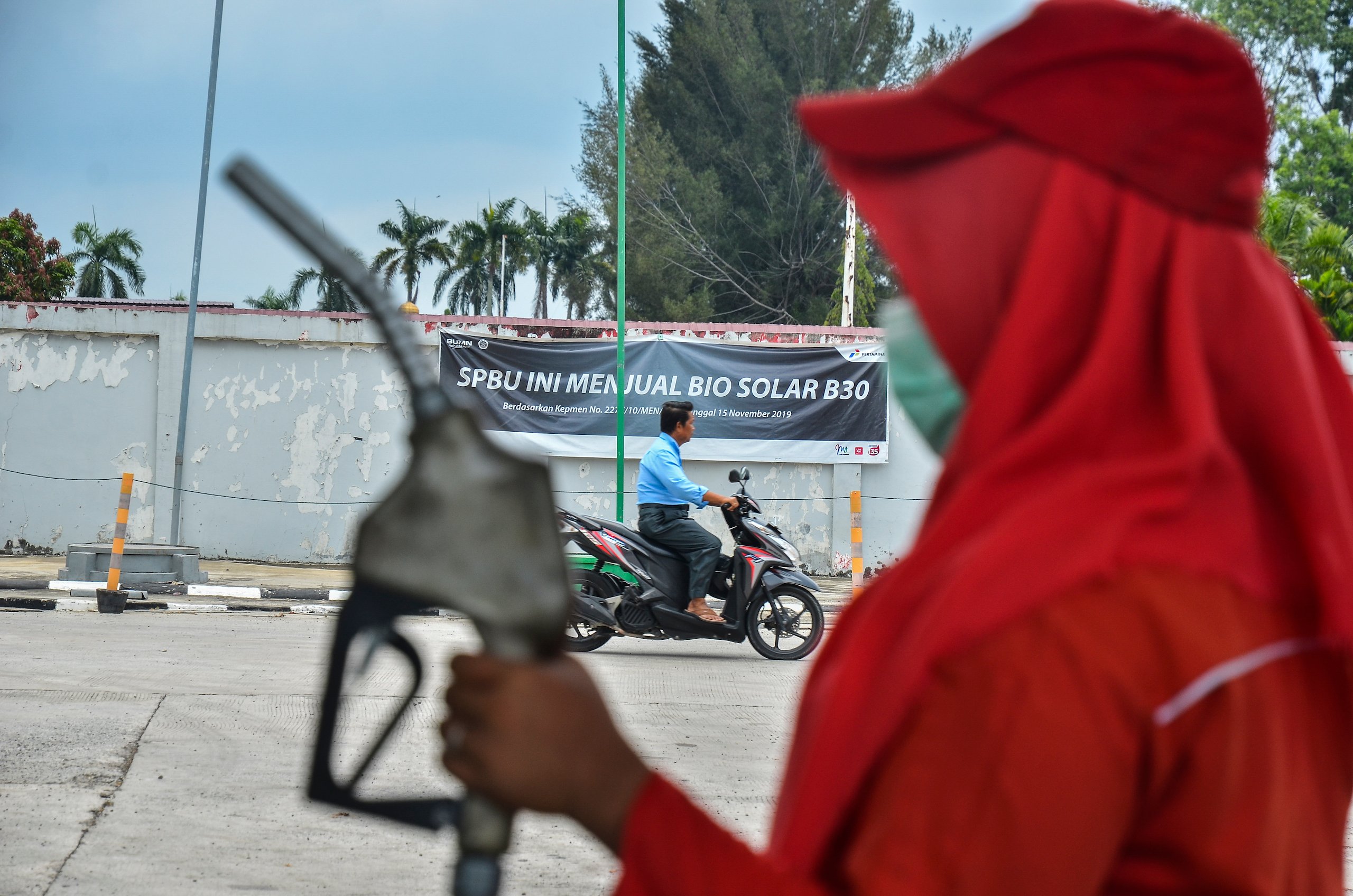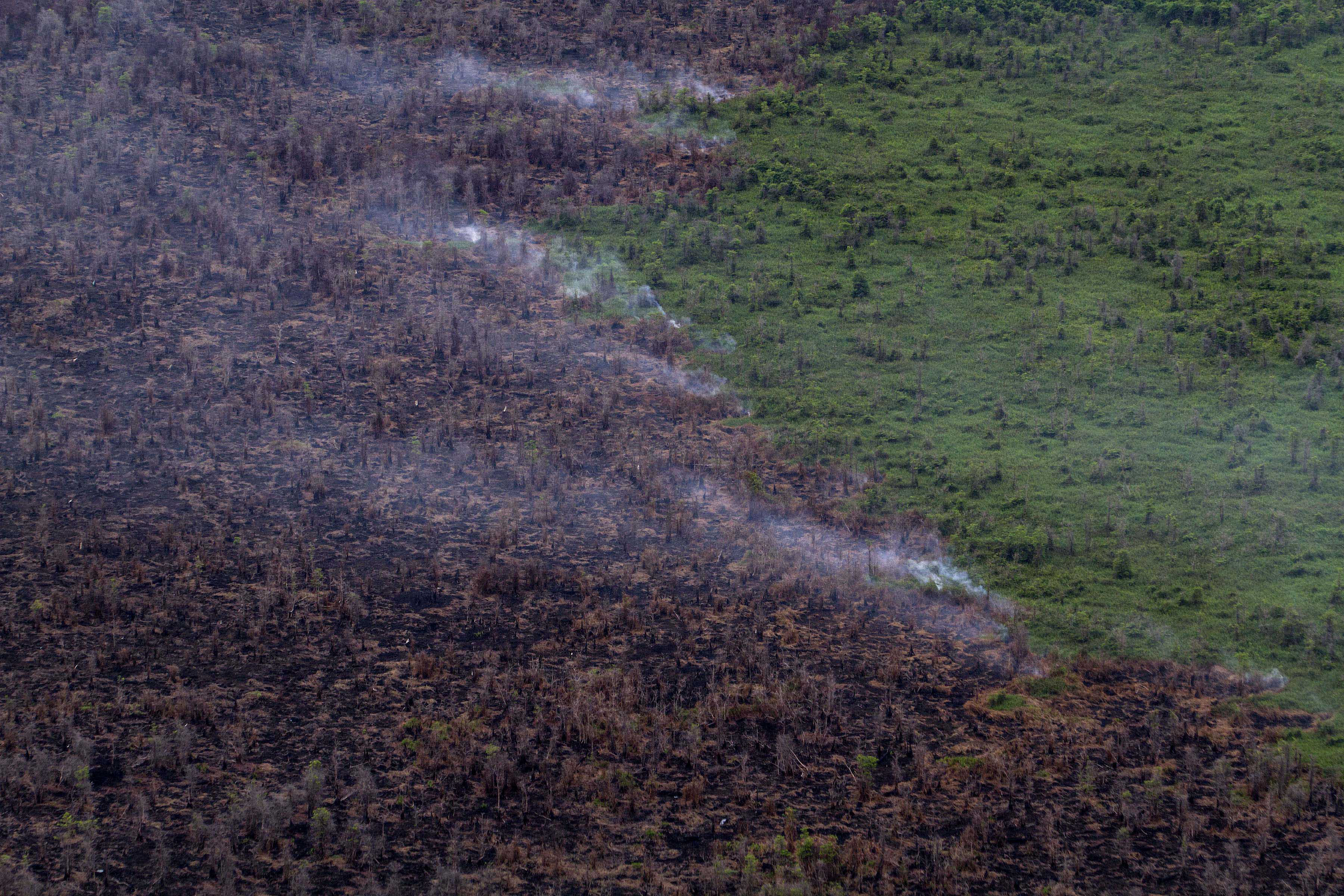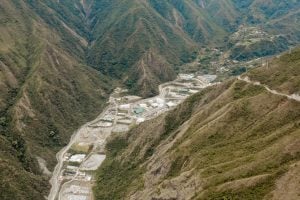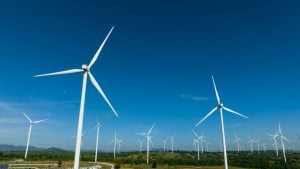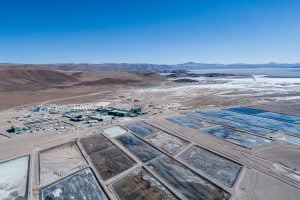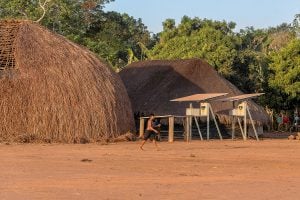Indonesia is aiming to increase its use of biodiesel blends as a renewable and alternative fuel, but critics say it could undermine the country’s climate goals.
In August 2023, the country launched biodiesel blended with 35% palm oil content, a fuel mix known as B35, and its government has recently reaffirmed plans to introduce mandatory use of B40 – upping the palm oil content to 40% – by January.
Biodiesel is a renewable fuel made from vegetable oils or biomass, such as algae material and animal waste. It is blended with diesel for use in vehicles, and in Indonesia the blends use palm oil.
Campaigners and experts have now warned that the planned increase of palm oil in the fuel mix will lead to plantation expansions and therefore more deforestation.
More palm oil means more clearings
Indonesia’s coordinating minister for economic affairs, Airlangga Hartarto, told media in September that the government saved IDR 404.32 trillion between 2018 and 2022 because the mandatory use of biodiesel decreased the amount of diesel imports required.
But as the mandatory biodiesel blend rises, so too will domestic demand for crude palm oil (CPO), experts and campaigners say. This will be further fueled by newly inaugurated President Prabowo Subianto’s ambitious push to eventually implement B100, or 100% crude palm oil, in a move intended to shift the country away from reliance on imported diesel and bring Indonesia towards energy self-sufficiency.
Indonesia produced 50 million tonnes of CPO in 2023, an increase of 7% from the previous year, according to the Indonesian Palm Oil Entrepreneurs Association (GAPKI). The country is the world’s top CPO producer, with Airlangga announcing that it accounted for 54% of global exports that same year.
According to data from MapBiomas, during the past two decades, the country has seen a 145% increase in land used for palm oil plantations, from 7.2 million hectares in 2000 to 17.7 million hectares in 2022.
“The [MapBiomas] data shows that for the last two decades, the Indonesian government has always used conventional strategy to meet growing demand for palm oil – that is, to expand oil palm plantations,” said Iqbal Damanik, a forest campaigner with Greenpeace Indonesia.
An April 2024 report by Greenpeace Indonesia, Satya Bumi, Traction Energy Asia and the Indonesian Palm Oil Farmers Union (SPKS) sets out potential scenarios for the government’s biofuel targets. It found that international and domestic demand for palm oil for all purposes will reach 67.1 million metric tonnes (mt) in 2042 if the biodiesel blend remains at the current B35 until then. But if the government implements B50 in 2025 – the most aggressive scenario projected by the report, and one which Prabowo is aiming for – demand for palm oil will increase to 75.63 million mt by 2042, it noted.
“The current production will not cut it for future needs,” says Iqbal. “Indonesia will be forced to open [up] more forests to produce more crude palm oil.”
The analysis also states that in the scenario where B50 is adopted next year, the potential for deforestation exceeds 1.5 million hectares by 2039.
“Our calculations are still conservative, even in the aggressive scenario,” Damanik adds.
There are around 3.4 million hectares of dormant forest within oil palm plantation concessions, which are mostly on the islands of Papua and Kalimantan, and “the first areas to suffer destruction will be [these] remaining [forests] in the concessions”, noted Damanik.
Catra de Thouars, vice chair on promotion and communication for the Indonesian Biofuel Producers Association (Aprobi), said the country’s infrastructure is prepared for implementing the higher mixes of biodiesel, and that it “will support the government whether it decides to go [with] B40 or B50,” he said. “But if the mixture reaches B50, additional production capacity is needed.”
Aprobi’s vice chair of research and technology, Jummy BM Sinaga, also said at an energy forum in August that Indonesia’s 20 million kilolitre annual biodiesel capacity was still sufficient for increasing the biodiesel mixture to B40, the trial for which is being rolled out in stages.
Climate goals at risk?
Converting forest into oil palm plantations can lower carbon stock and cause other impacts, such as groundwater storage, erosion prevention, and biodiversity preservation, notes Shahnaz Nur Firdausi, an energy and climate analyst at the Institute for Essential Services Reform (IESR).
In addition, clearing forest areas by burning to make way for plantations releases a significant amount of carbon dioxide into the environment, which “will make it harder for Indonesia to meet its climate targets”, she adds.
Biodiesel does not really contribute much to Indonesia’s economy, only [benefitting] the palm oil companies
In 2022, Indonesia unveiled its newest climate pledge, the enhanced Nationally Determined Contribution (NDC). It notes that the land use, land-use change and forestry (LULUCF) industry is one of the primary contributors of emissions in Indonesia. In 2019, the industry was responsible for just over half of the country’s emissions (50.13%), inclusive of peat fires, followed by energy (34.49%), waste (6.52%), and industrial activities and product consumption (3.15%). Indonesia aims to have its carbon sequestration from the forestry and other land use (FOLU) sector be “higher than, or at least equal to its overall emissions” by 2030.
In the country’s enhanced NDC, biodiesel becomes one strategy to reduce emissions, especially from the energy sector. However, adopting a biodiesel policy to accomplish such goals could backfire. A 2017 study concluded that biodiesel policies do not provide any net climate benefits, mainly because of high emissions associated with increased pressures on palm oil expansion.
It noted that, ignoring the carbon cost of land use, the net carbon benefit of biodiesel is five to seven tonnes of carbon dioxide per hectare per year. However, taking land use into account, “in the case that the palm oil biodiesel came from a new plantation on previously forested peatland, instead of a carbon saving, there would be a dramatic increase in estimated net emissions of 120 tonnes carbon dioxide per hectare per year”.
Fiorentina Refani, a researcher at the Center of Economic Studies and Law (Celios), says that Indonesia must impose a permanent palm oil moratorium to protect the remaining forests from the risk of land clearing and deforestation.
A Celios study that has not yet been published, but has seen by Dialogue Earth, notes that a moratorium policy, along with forest replanting, will result in economic output of IDR 27.3 trillion by 2045, while a lack of a moratorium will come at a loss of IDR 27.9 trillion. “The government still needs to give incentives for this program; biodiesel does not really contribute much to Indonesia’s economy, only [benefitting] the palm oil companies,” Fiorentina says, adding that Indonesia should bring back the moratorium, which was in place from 2018 to 2021.
Focus on the underlying problem
IESR research manager Raditya Yudha Wiranegara acknowledges that use of biodiesel means carbon monoxide and particulate matter vehicular emissions can be decreased, noting that the institute’s ongoing analysis showed a 15% reduction in emissions when B30 was used compared to petrol. “But we also have to consider emissions holistically, from upstream to downstream,” he says, emphasising that biodiesel cannot be a long-term solution to cut emissions in the energy industry.
Raditya suggests that instead, the government should concentrate on the development of solar power and gradually phase out coal-fired power facilities.
Meanwhile, Shahnaz says that preventing forest fires of any cause will be the most crucial way to lower emissions from the LULUCF sector – the biggest source of emissions in Indonesia. After that, reforestation and afforestation efforts should continue, she adds.
Sayyidatiihayaa Afra, a policy researcher at Satya Bumi, a civil society group focusing on environmental advocacy, says biodiesel “is a driver of deforestation, and if the blend target keeps on increasing, it will certainly be a setback for Indonesia’s climate efforts”.
Iqbal of Greenpeace Indonesia adds: “Given the risks to climate and environment, Indonesia’s biodiesel blend has to stop at B35.”
